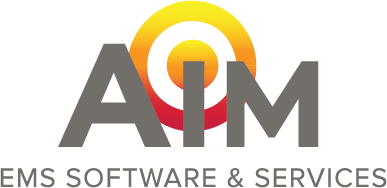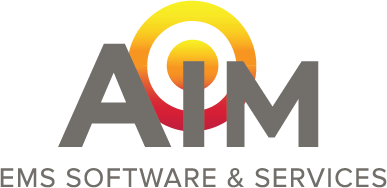
As a leading provider of EMS Billing Software and EMS Billing Services, AIM has built up a wealth of knowledge on how to optimize the billing process to reduce denials and maximize reimbursement. Our internal billers do exactly that for the many organizations that choose AIM for outsourced EMS billing services. AIM also works with other billing services and providers' in-house billing staff to understand best practice workflows that enhance their EMS billing software functionality. Here are six techniques found effective in improving EMS billing and increasing reimbursements.
Tip #1: Leverage Customized Alerts and Notifications
Setting alerts and notifications within your EMS billing software can keep tasks from falling through the cracks, avoid claim denials and rejections, and speed reimbursement. The AIM billing team recommends setting up alerts and notifications like these:
- Reminders about specific billing codes required by a particular payer in a certain state (such as the U8 modifier for Pennsylvania Medicaid)
- Reminders to enter a zip code on a prior authorization form for payers that require it
- Notifications targeted to new billers or those having difficulty with a certain type of task, to improve the learning and reduce errors
- Alerts about deductible holds, which are especially relevant at the start of a new year
- Location-specific alerts—for example, if a facility operates separate floors for skilled nursing care and personal care, it’s essential to use the correct modifier to avoid a denial
Tip #2: Enhance EMS Billing Workflows
EMS billers often find themselves mired in daily tasks, leaving no time to assess whether they’re using the optimal workflows to stay on top of less routine tasks. The best way to optimize all your billing workflows is to leverage your EMS billing software functionality.
For example, AIM’s billing solution enables you to create a customized workflow to ensure billers attend to every task at the right time, whether daily, weekly, or monthly. Setting up payments to post electronically is another important workflow that saves time and improves accuracy, especially for large remittances with multiple payers. A remittance with a 14-page EOB could take an hour to post manually vs 10 minutes electronically.
Creating work queues is also a great way to optimize your billing workflow. Each biller should be able to filter their work queue by criteria such as payer, age of the bill, last activity date, or service type, so they can drill down into the data for a clear picture. By using customized queues to work claims, your billers will be sure they’re doing everything possible to obtain payment before turning it over to collections.
Tip #3: Develop Standard Operating Procedures (SOPs)
Documenting and following SOPs keeps every biller working consistently and efficiently, according to your policies. Use your EMS billing software to store critical SOPs and cheat sheets related to payer logon credentials, payer fee schedules, and critical subscriber or membership details like available discounts. By creating a library of easily accessible resources, you’ll equip every biller (whether new or tenured) with everything they need to perform the job efficiently and maximize reimbursements.
Tip #4: Minimize Paper
Reducing paper-based processes frees your billing staff to focus on tasks that need their skills and attention. Here are just a few ways you can minimize inbound and outbound paper to improve billing efficiencies and accelerate payment.
- Leverage your clearinghouse capabilities. Some can attach supporting documentation to the claim, such as the trip notes certain payers require, eliminating the need to print these documents internally.
- Outsource statement, invoice, and warning letter printing. It’s tedious and time-consuming to print, stuff, label, and mail these documents. And when skilled labor is in short supply, it’s not the best use of your staff’s time. Many EMS agencies find it more cost-effective to outsource this task.
- Use a lockbox service to manage incoming mail. Why tie up an experienced biller handling incoming mail when you can shift the responsibility to a lockbox vendor? Your billers will gain more time to handle higher-value activities that optimize revenue and improve cash flow. The right vendor will even scan incoming checks for deposit to your agency’s bank account.
- Use your EMS software to attach documentation to bills. Most ePCR and EMS billing software enables you to store supporting documents related to the claim (like EOBs and medical necessity statements) and attach them to an ePCR or bill. Using the software’s attachment feature reduces the risk of protected health information (PHI) exposure and makes it faster and easier to access documents when needed for an appeal or audit.
- Use electronic payment services. If you have payers still remitting payment by paper check, it’s time to move them to electronic remittance advice (ERA) or electronic funds transfer (EFT). Your billers will gain time to handle more complex tasks as you watch your cash flow improve. If your payers can integrate directly with your EMS billing software, you can download their payments for automatic posting—another big time saver.
Tip #5: Hire and Onboard New EMS Billers Effectively
In a tight labor market, it’s challenging to find employees with the skills to handle a specialized function like EMS billing. Sometimes the best candidates are current agency employees; in fact, AIM has seen dispatchers and other staff members successfully transition to a billing role.
Once you’ve hired the right billers, a well-documented training plan will set them up for success. If you don’t have the bandwidth to conduct thorough training internally, consider tapping a training provider like Maggie Adams or NAAC. And be sure to leverage your EMS billing software vendor’s training, so billers are equipped to maximize the software’s features. Live software training typically helps billers get up to speed faster and gain more confidence than they could get by listening to a pre-recorded session.
A phased approach to onboarding is often best—starting with pre-billing tasks like insurance verification, then moving to coding bills, then adding payment posting and other post-billing tasks. Be sure to build in QC spot checks to confirm new billers are handling claims properly, especially tricky Medicare and Medicaid claims.
Tip #6: Monitor EMS Billing Performance
Optimizing your billing function demands visibility into how the function is performing. This is another area where your EMS billing software can help. Most EMS billing solutions enable you to run biller productivity reports and filter the data by biller, task, or date range. The insights you gain from these reports will help you determine if certain billers need more training to work more efficiently.
Proven techniques like these are even more powerful when you combine them with the robust, cloud-based EMS Billing Software.
Hundreds of EMS agencies use our EMS Billing Software to streamline their billers’ work, enhance revenue cycle management, and improve cash flow. Our billing software is purpose-built for EMS operations by a team with decades of EMS industry experience. We understand the challenges you face in running a profitable agency today, and we offer a billing solution that helps you overcome those obstacles and optimize your revenue.
Schedule a demo of AIM’s EMS Billing Software. Or request a free evaluation of your billing process.



